
What to see in the Baltics
Must-see art exhibitions in January-February, 2024
We present our overview of what, in our opinion, deserves attention, providing you with a selection of exhibitions and art events in the three capitals of the Baltic countries. In the future, we plan to make such reviews a regular feature and expand their geography from the capitals to other cities in these three countries, united by a common historical course and cross-cultural ties.
ESTONIA, Tallinn
KUMU
Raoul Kurvitz. The Master and the Eternity V. 1985
Borderless Universe in Their Minds: Italian Transavantgarde and Estonian Calm Expressionism
Until 19 May
This ambitious international project is focused on the creative dialogue between works by Italian and Estonian artists in the second half of the 1980s. The exhibition presents the Estonian audience with a representative survey of works from private Italian collections and museums that were created by the Transavantgarde group, which was formed in Italy in the late 1970s. The works are displayed side by side with works by Raoul Kurvitz (1961) and Urmas Muru (1961), who renewed the Estonian art scene in the second half of the 1980s. Although born on the other side of the Iron Curtain, Kurvitz and Muru’s Calm Expressionism – as the artists themselves called it – is like a northern reflection of Italian Transavantgarde. For the Kumu Art Museum, one of the goals of the exhibition is to draw attention to Estonian painting from the 1980s and its significance. This period in art has also been called the “lost decade”. The artistic community kept a certain distance from daily politics during the transition period, and the 1980s were rather uninteresting in art history against the background of the great changes that would follow the restoration of Estonia’s independence. Therefore, this decade still needs to be seriously studied.
melanie bonajo. When the body says Yes. 2022. Video still. Scenography and installtion with Théo Demans
melanie bonajo. When the body says Yes+
Until 28 April
When the body says Yes+ is a solo exhibition of the Dutch artist melanie bonajo (they/them/theirs). The artist is searching for an answer to the question of whether there is still a place for intimacy in our increasingly commercialised and technological world. The central theme of the exhibition is touch, literally, but also touch as our relationship to each other and the world around us. For bonajo, touch can be a powerful remedy for the modern epidemic of loneliness. melanie bonajo’s work When the body says Yes represented the Netherlands at the Venice Biennale in 2022 and is now touring European museums. In addition to the immersive and sensitive biennale project, the exhibition includes three previous videos to introduce melanie bonajo’s practise more widely. In collaboration with the artist, Théo Demans has created a sensory and playful spatial scenography, through which the worlds created in the videos are transferred to the exhibition space.
Kai Art Centre
Tuomas Laitinen 'Haemocyanin' (2019) still from a video. Courtesy of the artist and Helsinki Contemporary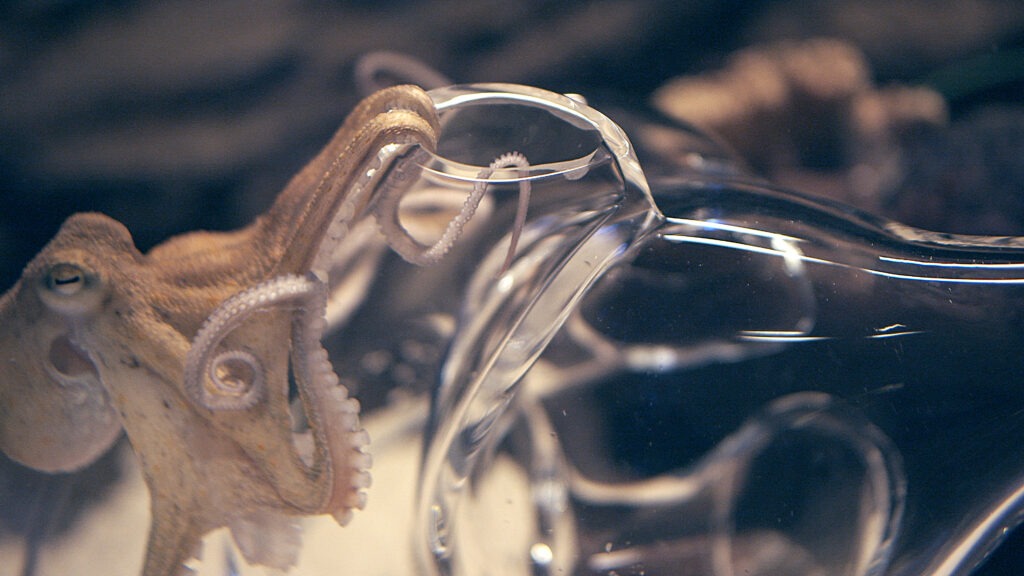
Tuomas A. Laitinen & Kristina Õllek 'Cyanoceans'
26 January – 4 August
Tuomas A. Laitinen’s work revolves around the exploration of symbiotic processes infused with mythological undertones, grounding itself in the concept of mutualism. Drawing inspiration from various biological theories as well as mythical stories, Laitinen’s work transcends the mere study of biology to inquire about the intricate entanglements of structures and lives within our complex, pulsating ecosystem. On view at Kai will be his complete series of Proposal for Octopus glass sculptures which Laitinen started in 2016, including the newest additions to the series made in 2024. Premiering at Kai will be his new video work filmed at the Okinawa Institute of Science and Technology in December 2023 which highlights the changing skin color of sleeping octopuses. Laitinen’s years-long research into cephalopods’ unique behavior and the remarkable similarities between the nervous system and sleep patterns of octopuses and humans fuels his special interest in species adaptation and neuroplasticity in rapidly changing environmental conditions. With Kristina Õllek, the artists have created a synergetic installation supported by steam, and ultrasonic sound which gives the viewer a sense of being underwater. The focus of Õllek’s work over the last six years has been the exploration of the intricate relationship between marine ecology and technology, using various geographical regions as case studies. For this Kai installation Õllek has concentrated on the Baltic Sea, creating a series of new works using grown seal salt, cyanobacteria, and green fluorescent pigment.
Temnikova & Kasela Gallery
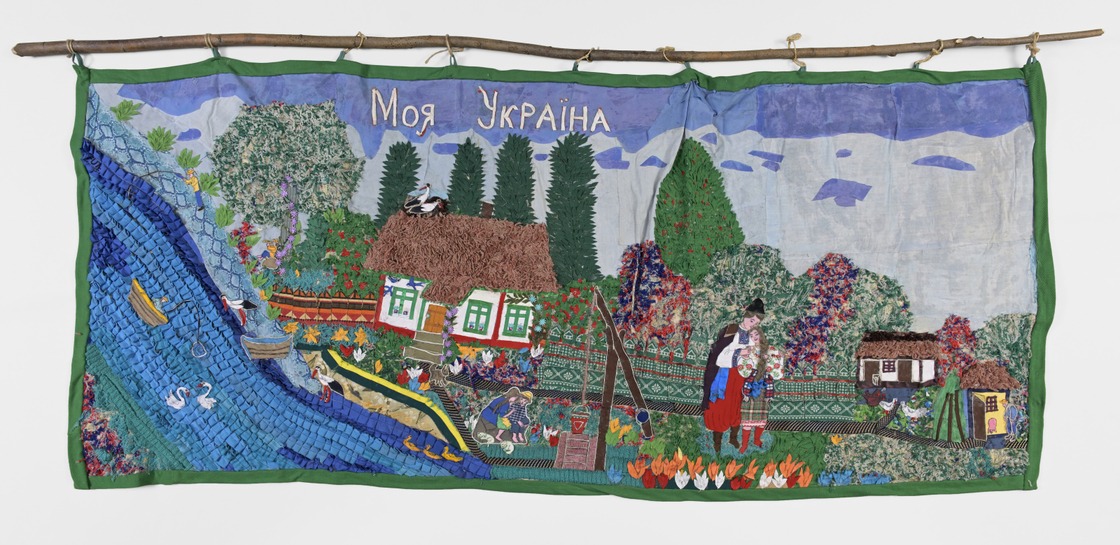
Nina Vinnik’s Ukraine
26 January – 17 March
One of the most infleuntial Tallinn’s galleries is presenting the exhibition of Ukrainian naïve artist Nina Vinnik's. Nina Vinnik (b. Ukraine 1928, d. Estonia 2011) was a prominent artist of Ukrainian cultural life here, whose prolific creations include a magnificent collection of handicrafts, several large-scale books made of fabrics and large colorful appliqués. The choice of themes of naive creations reflects rural Ukrainian life in a fairy-tale way. In March 2007, the biggest exhibition of the artist, was the exhibition "Spirituality" in the Tallinn National Library together with icon artist Andri Humenjuk. Nina Vinnik's works were also important in the interior and exterior design of the Ukrainian Greek Catholic Church on Laboratoorium Street in Tallinn. Created using the appliqué technique, Nina Vynnyk’s pictures – wall-mounted and collected in albums – were born from homesickness. They tell of an ideal world to which evil has no access and life’s everyday difficulties and deep worries are replaced by affirmations and joy. An illusory paradise-like world reveals itself in Vynnyk’s works with the simplicity, sincerity, intimacy and bright colours typical of naïve art.
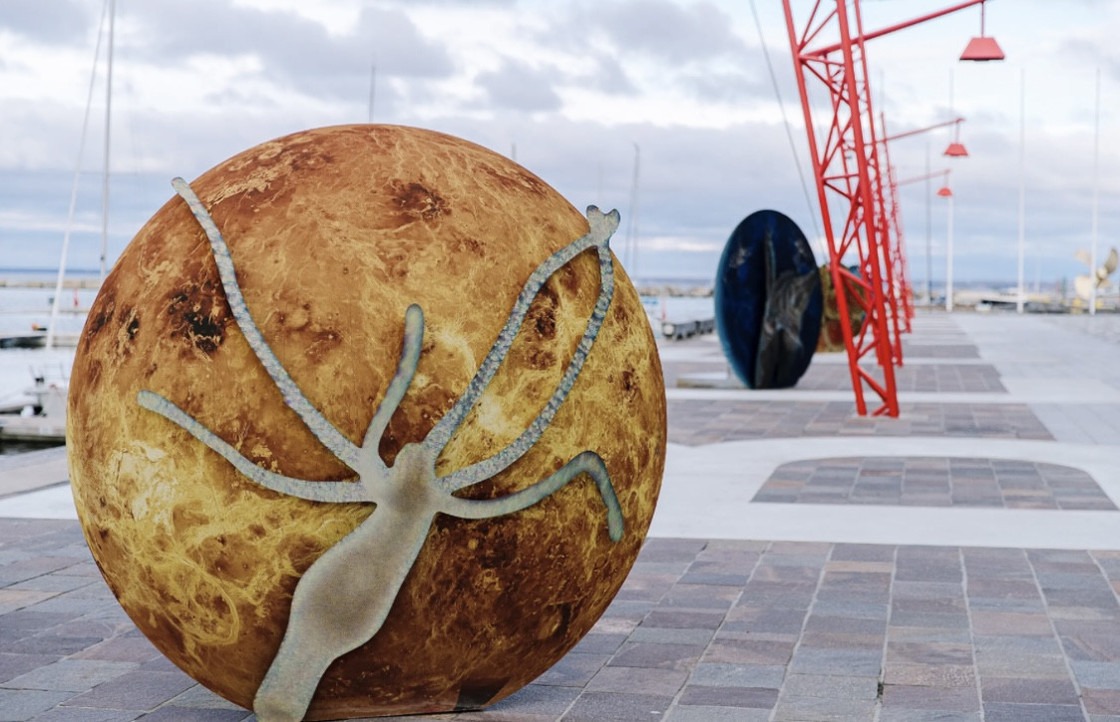
Another Temnikova & Kasela project which is worth to see is Katja Novitskova's open-air project 'Earth Potential' at Noblessner (until March 2024). 'Earth Potential' is a presentation of works by artist Katja Novitskova (b. 1984, Tallinn, Estonia; working in Amsterdam) that explores the connections between science, technology, literature, and our image-based culture. In front of the Kai building stand four large aluminum sculptures featuring online-sourced, digitally-printed images of the Earth: celestial objects, and enlarged, seemingly alien but terrestrial organisms. There striking images were originally created using a novel imaging technique: a microscope capable of magnifying organisms 10 000 times and a satellite orbiting the Earth. These sculptures explore worlds unseen by the naked eye using photography, scale, and juxtaposition to transform the dockside into a sci-fi landscape.
Fotografiska
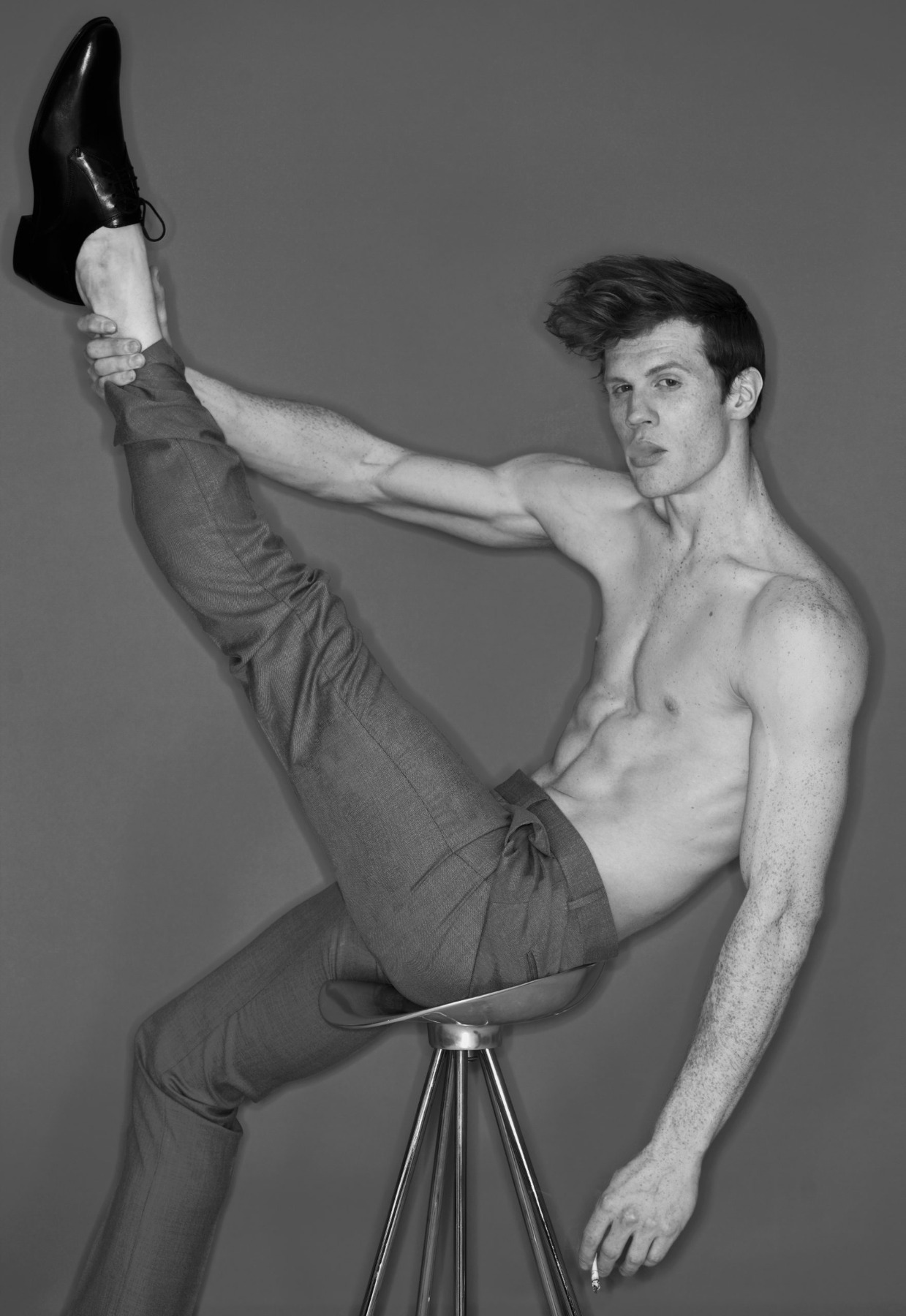
Toomas Volkman. Pastful blast
Until 10 March
Large-scale retrospective exhibition of Toomas Volkmann’s work tells the artist’s story in more than 100 photographs from his 30-year creative journey. The importance of the exhibition lies not only in the unravelling of the artist’s own world, but also in the sensitive mapping of an era, from the painful brittleness of the 1990s to the arrogant aesthetics of the 2010s. For the first time, the exhibition will occupy not only the exhibition hall but also the 1st and 6th floors of Fotografiska.Toomas Volkmann has been active in exhibitions in Estonia and abroad since 1979, and has also been a guest lecturer at the Estonian Academy of Arts and the Tartu Art School. Volkmann’s language is symbolically dense, allowing the creation of highly charged image-constellations. He is at once theatrical and discreet, morbid and vivid, spectacularly dramatic and skin-deeply intimate. “Pastful Blast” unfolds in a confluence of these contradictory facets, not along a linear timeline but rather along a symbolist-allegorical path.
Tütar Gallery
Maryliis Teinfeldt-Grins. Who Remembers Last, Who Remembers Better?
19 January – 25 February
The focal point of the exhibition is a five-meter-long rag rug created as a collaborative effort by Kadrina community, telling the story of a vanished village and hill in Lääne-Virumaa in 1977. The focal point of the exhibition is a five-meter-long rag rug created as a collaborative effort by Kadrina community, telling the story of a vanished village and hill in Lääne-Virumaa in 1977. Koplimetsa is a historical village in Kadrina parish, established in 1877. The village disappeared in 1977 when farms were replaced by collectives, and people were resettled from farm buildings to apartments. Concurrently, changes were made to the local landscape, most notably the removal of a four-kilometer-long esker wall, Niinemäe. The gravel obtained from the hill was used for nearby military objects and the construction of the Tapa-Loobu road. This episode is not unusual in Estonian history; there are many such villages that have disappeared. The lost Koplimetsa serves as an example to narrate the story of Estonia and, more broadly, our entire region.
LATVIA, Riga
Latvian National Museum of Art
Jāzeps Grosvalds in Petrograd in 1916. Photograph from the Memorial Collection of Jāzeps Grosvalds, Latvian National Museum of Art, Riga. Publicity photo
“I am now committed to living for art” Jāzeps Grosvalds. 1891–1920
Until 30 March
Jāzeps Grosvalds (1891–1920) was a very multifaceted, immensely talented personality about whom it is possible to say that, in essence, all his activities can be considered artistic expression – not only artworks, but also letters, diaries, sumptuous self-made journals, even his modern way of dressing. The turning point in Jāzeps Grosvalds’ life, which made him mature both as a person and as an artist, was the start of World War I, when, being unable to return to Paris, he became acquainted with other young Latvian artists. Grosvalds, who held the technical ability and broad knowledge of art history of his colleagues in high regard and who himself, in turn, had the opportunity to educate them on the latest artistic trends, was to become the originator of classical modernism in Latvian art, establishing close relationships with his peers and founded the collective Zaļā puķe [The Green Flower]. Jāzeps Grosvalds was the first in many respects – with his cycle of World War I refugees, the cycle of Latvian Riflemen, Russian Revolution of 1917, Eastern Cycle based on his own experiences in the territory of Ancient Persia. The exhibition shows around 400 Jāzeps Grosvalds’ artworks from the collections of Latvian and Swedish museums as well as private collections, among them, more than 150 works from the Värmlands Museum in Karlstad. The presentation is accompanied by extensive research material in various formats, including digital and audio.
Kim?
Karlīna Mežecka. Archive of Fragility. 2023
Open Call exhibitions: Annemarija Gulbe / Gundega Strauberga & Ieva Jakuša / Karlīna Mežecka
19 January – 25 February
Kim? Contemporary Art Centre is showing three exhibitions by Open Call 2023 winners. Kim? Open Call is an annual competition for emerging artists, artist collectives, and curators, and the winners have the opportunity to realize an exhibition at Kim? exhibition halls. For the first time in 2023, three separate exhibition proposals were announced as winners – Annemarija Gulbe’s Faith to Believe – Or Not, Karlīna Mežecka’s Archive of Fragility, curated by Žanete Liekīte, and Ieva Jakuša & Gundega Strauberga exhibition Cheap Destinations. The exhibition’s Faith to Believe – Or Not installation by Annemarija Gulbe is built around a video that combines fragments of collective and personal memories: photographic documentation of the baroque interior of the Vārme Church, which burned down in 1971, reportedly after a lightning strike, and clips from Skrunda TV. “Faith to Believe – Or Not” carefully reconsiders the relationship between religion and aesthetics. In the exhibition Archive of Fragility (curated by Žanete Liekīte), Karlīna Mežecka reflects on categories of fragility by turning to the poetics of regional space and human emotional experience within it. The images of the space “move in both directions: they are in us as much as we are in them,” initiated Gaston Bachelard. Leaning on this statement, the exhibition Archive of Fragility encompasses interior space, the individual’s inner world, external space, and outward bodily experience, becoming a tool for analysis of the human soul. In Cheap Destinations, Gundega Strauberga and Ieva Jakuša look at the identity of Riga as a tourist destination from two contrasting perspectives: through the prisms of foreign low-budget airlines and local branding techniques. The project highlights the differences between marketing approaches taken by those with an outside perspective and others linked to Latvian cultural heritage.
Zuzeum
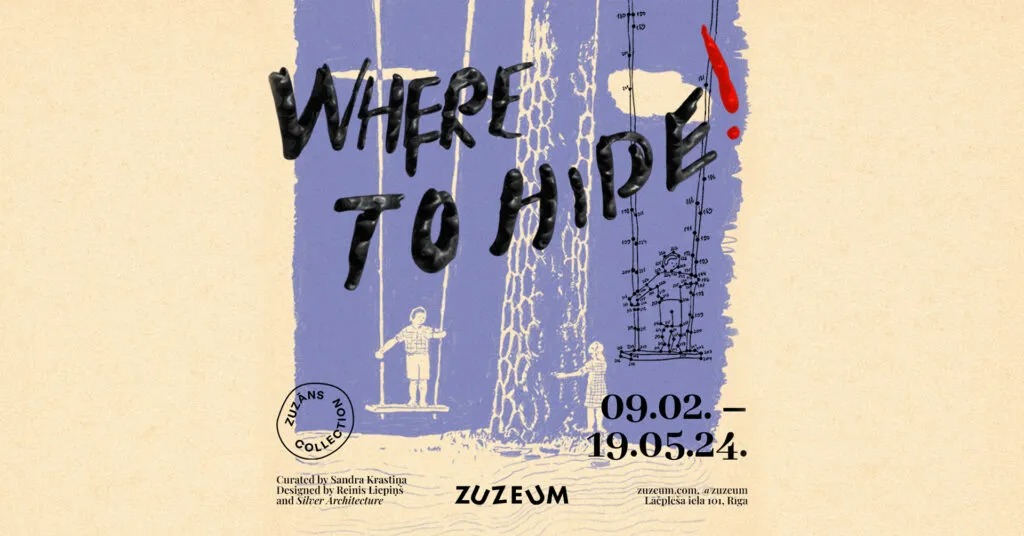
Where to Hide!
9 February – 19 May
The exhibition presents more than 350 works created by Latvian artists under Soviet occupation from the Zuzāns Collection, Latvian National Museum of Art and private collections as well as materials from the Latvian State Archive of Audiovisual Documents. Where to Hide! – not a question but a scream of realisation in the face of Soviet reality appears in the spontaneous caption for a 1954 drawing by artist Roberts Stārosts. This text, with its grammatically uncorrected Latvian form, is a poignant indicator of the existential choices people had to make. This title underlines curator Sandra Krastiņa’s intention to structure the exhibition around two points of reference – the set of themes co-opted by the authorities and the artists’ endeavours in the language of free expression. These works, produced during the Soviet occupation from 1945 to 1990, are authentic witnesses to the dues paid to the powers that be as well as to the spirit of resistance and disobedience which the artists have succeeded in incorporating in their works, constructing a space freed from Soviet ideology. At the same time, the exhibition highlights the lack of the Contemporary Art Museum and permanent exhibitions showing the period of Soviet occupation.
ISSP
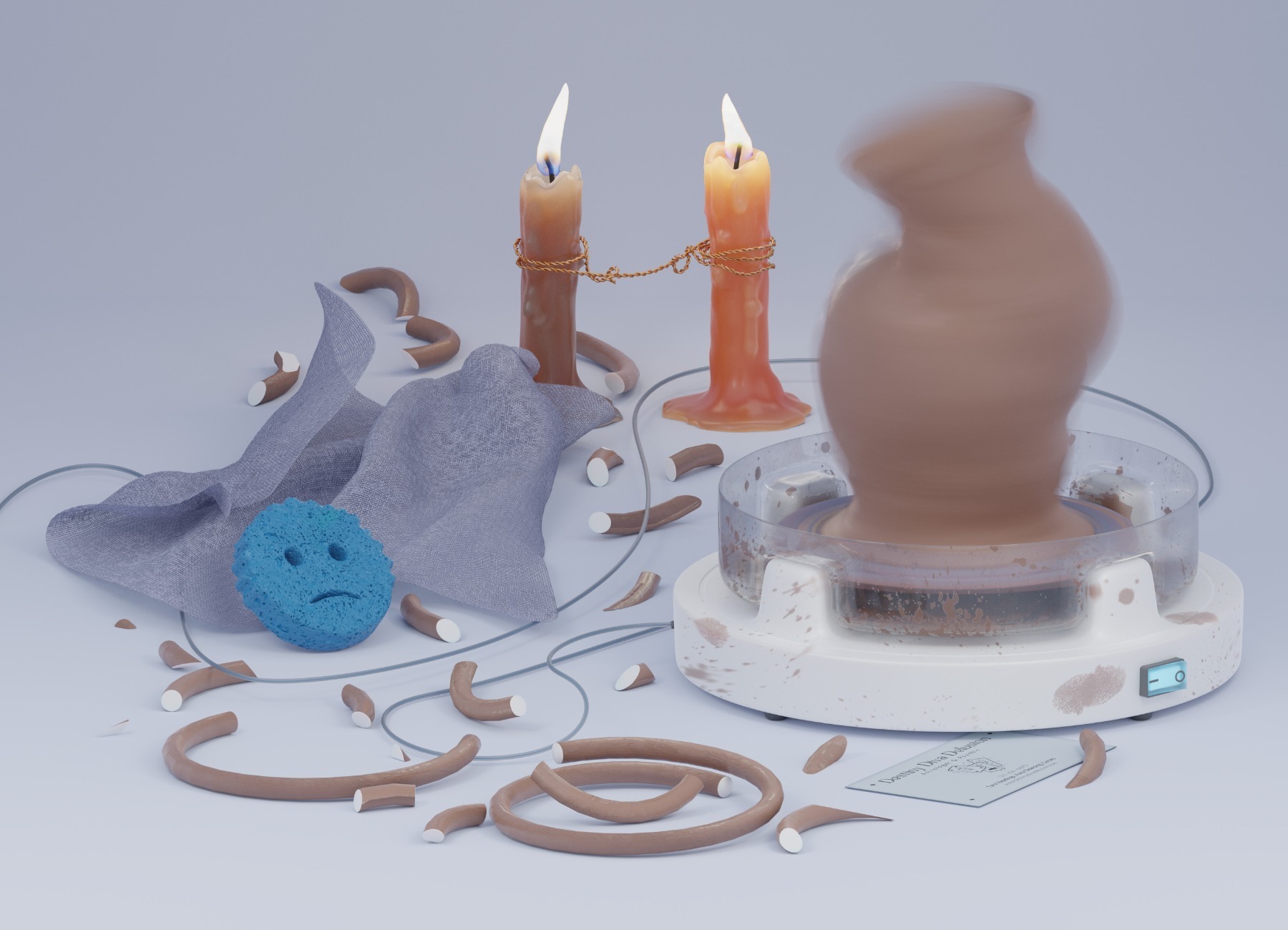
Santa France. I’m in this picture and I don’t like it
Until 7 March
The ISSP Gallery in collaboration with Wunder Kombinat is hosting the solo exhibition “I’m in this picture and I don’t like it” by Santa France. The exhibition is presented as part of the publication “WunderKombināts II. Latvian Art Yearbook 2023”, and is a spatial extension of the visual essay contained in the yearbook. Depicting people’s endless desire for control over their destiny, the search for inner peace and the desperate attempts to escape existential horror, Santa France has created a visual story that tells the conflict between different ways of thinking – magical and catastrophic – using the Japanese Ikebana and Kintsugi techniques as a visual and conceptual reference. In Ikebana art practice, the master creates floral compositions from various organic materials, following certain principles to structure nature into a form that is pleasing to humans. The performance of specific actions with the aim of influencing the order of things and the outcome of events is also in line with the principles of magical thinking. This is contrasted with catastrophic thinking, which denotes a state or tendency in which the individual focuses on the realisation of a potentially worst-case scenario, perceiving it as real, even if it is absurd and impossible. But even the worst-case scenario – a catastrophe – does not necessarily mean the end of something and a complete loss of control.
TUR_telpa
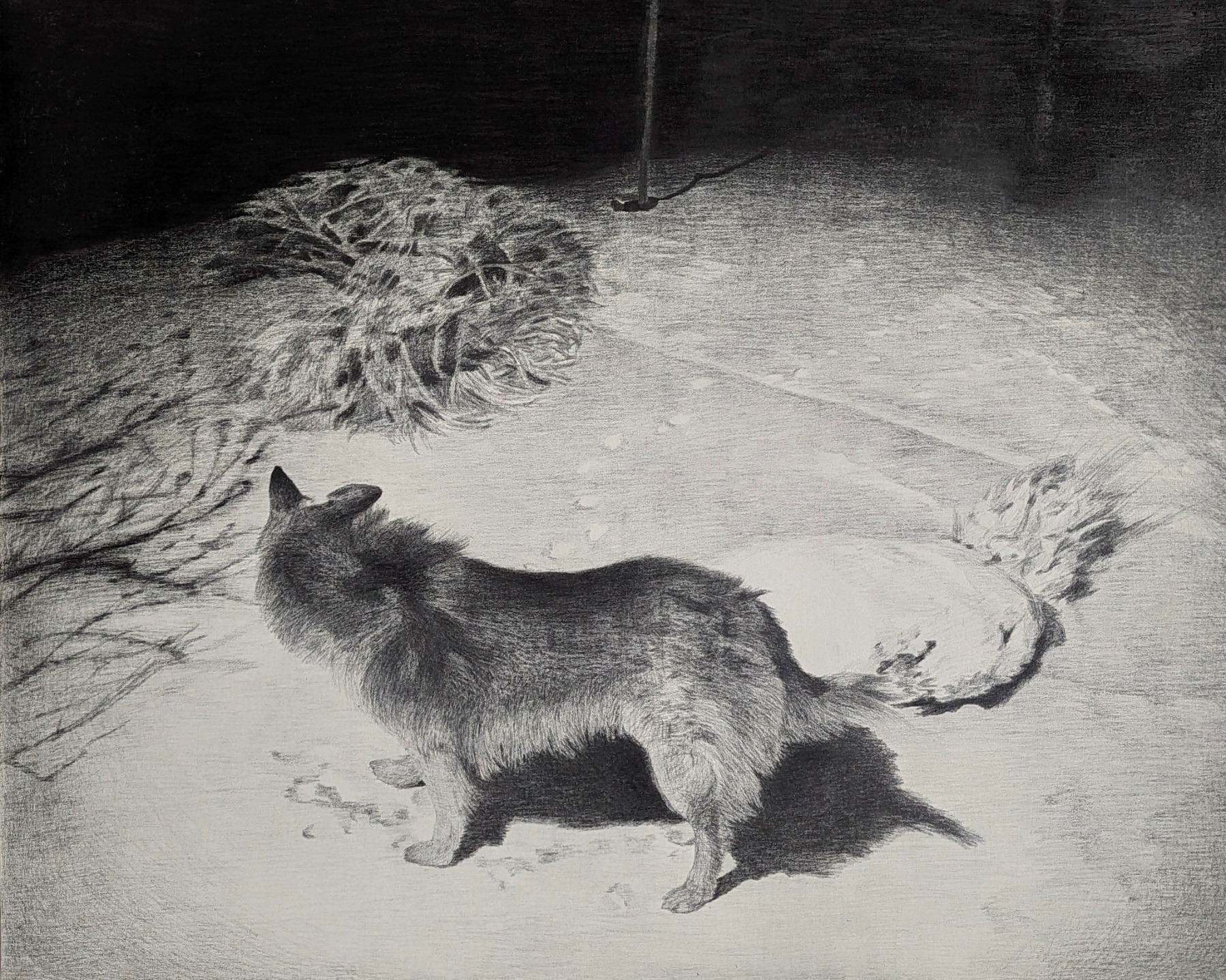
Luize Rukšane. Folding Lines
18 January – 17 February
Luīze Rukšāne is best known for her true-to-life graphite drawings which have been exhibited in both solo and group shows in Latvia and abroad. For her exhibition at the art-space TUR_telpa she draws inspiration from the tablet photos her grandmother sends from the threshold of her home which document the weather and any other goings on. Rukšāne uses the photos, which are usually attached to an everyday greeting in the family group chat, to represent the relationship she has with her grandmother. Rukšāne transforms the communications and perspectives of her grandmother into her own interpretation. The digital snapshots become drawings in which something is gained and something is lost, on first glance the drawings might appear innocuous but there is a shade of darkness there as well, emblematic of the passing from one generation to the next. With the textiles that belonged to an elderly woman who passed away, Rukšāne has created impressive banner-like artworks that hang between six to seven meters from the ceiling and in each she has made subtle interventions by stitching the lines of specific folds into the material. It is a testament to the elderly woman's generation in their care of their material possessions and represents the contrast with the throw-away generation of the 21st century.
LITHUANIA, Vilnius
Museum of Applied Arts and Design

Pakui Hardware ‘Inflammation’
Until 11 February
Thematically, the new large-scale exhibition by Pakui Hardware, Inflammation, speaks of the fevers of humanity and the world, of the “flaming” bodies of the planet and of our own. On the marble floor, dunes of plastic soil. Along electric pathways, fuelled by motor “whisker” wires of neurons moves a gallery of kinetic figures; they resemble prosthetic organs and silhouettes of nervous systems. Instead of ceilings, dreamlike arches of geological or prehistoric animal fossils. In this delirious post-landscape, it’s hard to distinguish between what used to be attributed to nature and what was considered a human creation. Objects resembling human organs in a state of inflammation, architecture, a post-natural landscape, light and other technologies merge into a unified hybrid technoorganism. The architecture of this kinetic installation and the landscape of the plastic earth was created by Ona Lozuraitytė-Išorė and Petras Išora-Lozuraitis in collaboration with the artists. Preparing a solo exhibition in Lithuania after a long break, the Pakui Hardware collective will represent Lithuania at the International Art Exhibition of La Biennale di Venezia 2024 together with Marija Teresė Rožanskaitė (1933-2007). This exhibition is an introduction to the future pavilion.
National Gallery of Art

Simona Žemaitytė. Still Love Binge Life
Until 3 March
The exhibition brings together two video works made by the artist and filmmaker Simona Žemaitytė. Made in pre-pandemic Paris and post-pandemic London, the films explore human fantasies, suspension of natural attitudes and what it actually means to be inside of one’s own life project. On screen the stories are told through movements and conversational fragments, while bodies become landscapes of both – lived experiences and imagination. Lovebinge is an urban black box opera on love, intimacy and diversity. The video was filmed after the first pandemic wave, in summer of 2021 in London. The film looks into possibilities to tell stories on screen in an embodied way, bringing in the corporeal aspect of the subjectivities of the performers. In the film, five people take us through their journeys with infatuation and sex, avoidant and addictive behaviors. Still life is a film workshopped and shot in pre-pandemic Paris, together with Jacques Lecoq physical theater actors. This project was carried out in the context of Simona Žemaitytė’s PhD art research Death, Dying and Imagination. It uses various ideas drawn from patient-centered palliative care literature, and conceptualizes death as a form of transition, a process rather than an event.
The Radvila Palace Museum of Art
Igor and Svetlana Kopystiansky. Double Illusion. 2008. © Igor and Svetlana Kopystiansky
Igor and Svetlana Kopystiansky
Until 29 February
An exhibition by the American conceptual artists Igor and Svetlana Kopystiansky. A retrospective put together by the artists specifically for the museum space includes the artwork created by each of the them individually prior to the emigration to the West where their collaborative stage gained impetus. The event features still photography, works on paper, canvas, objects and video. The artists currently on a visit in Vilnius will be present at the opening of the exhibition. The artwork by Ukrainian- and Russian-born Svetlana and Igor Kopystiansky has been featured by the international biennials and museum events of consequence and is part of the collections by the leading museums. Several pieces by the artists are showcased at the Radvila Palace Museum of Art as well, as part of the Protest Art: The Rebels of the Soviet Era, the only permanent exhibition of non-conformist Soviet-period art currently on display at the art institutions across Northern and Central Europe.
Vartai gallery
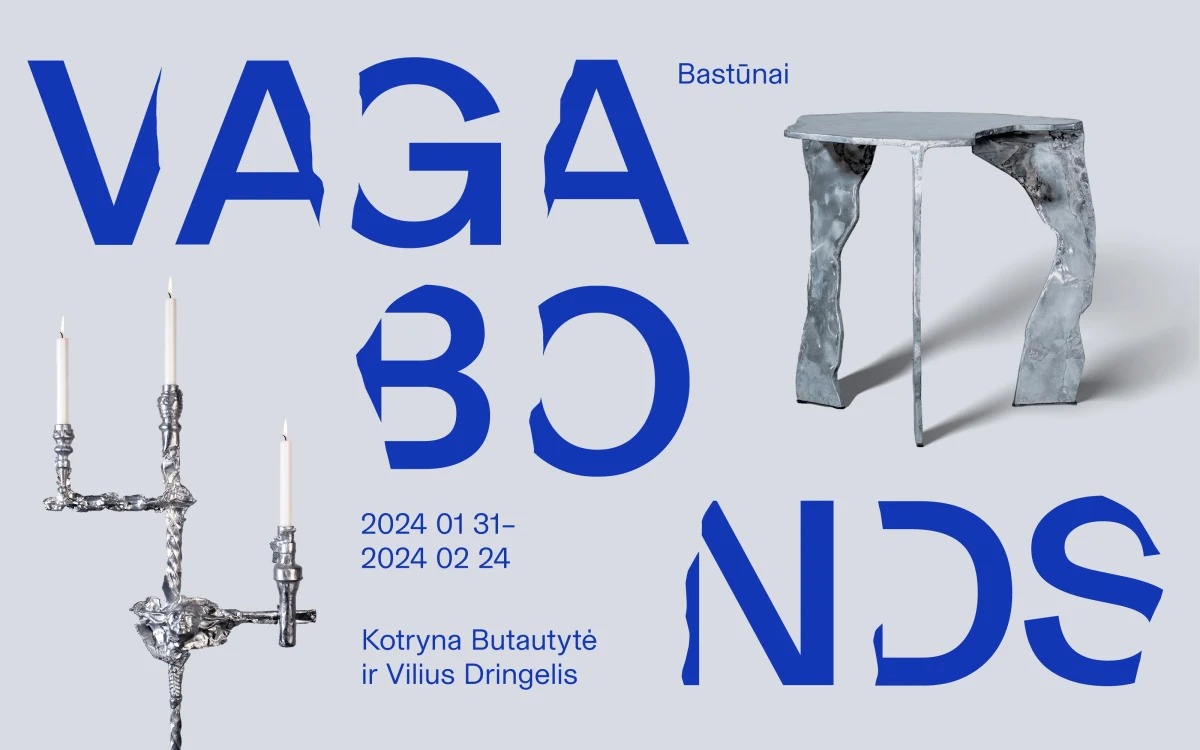
Kotryna Butautytė and Vilius Dringelis. Vagabonds
31 January – 24 February
"Vagabonds" refers to the creative process of the two young generation designers, where experimentation, imagination and unforeseen circumstances are deliberately unleashed as part of the creative process and as a design strategy. Butautytė and Dringelis interpret technology and the processing and use of materials in their own way, abandoning the strict rules of product manufacturing and reinterpreting their meaning. As a result, mistakes and artefacts of production that usually remain hidden from the consumer's eye, such as welds, splashes, oxidation or the natural wear of the material, become the main aesthetic elements that unite the designers. For Dringelis, wandering is the migration between urban spaces and domestic elements, whose images and stories are reorganised through foil imprints and transformed into unique narratives. For Butautyte, it is the search for a kind of "choreography" in which the flowing metal, the zinc plate scraps left in the studio or the melted plastic become performers that give the object its form, functionality and its possible relationship with the person who will use it.
Vilnius City Gallery Meno Niša
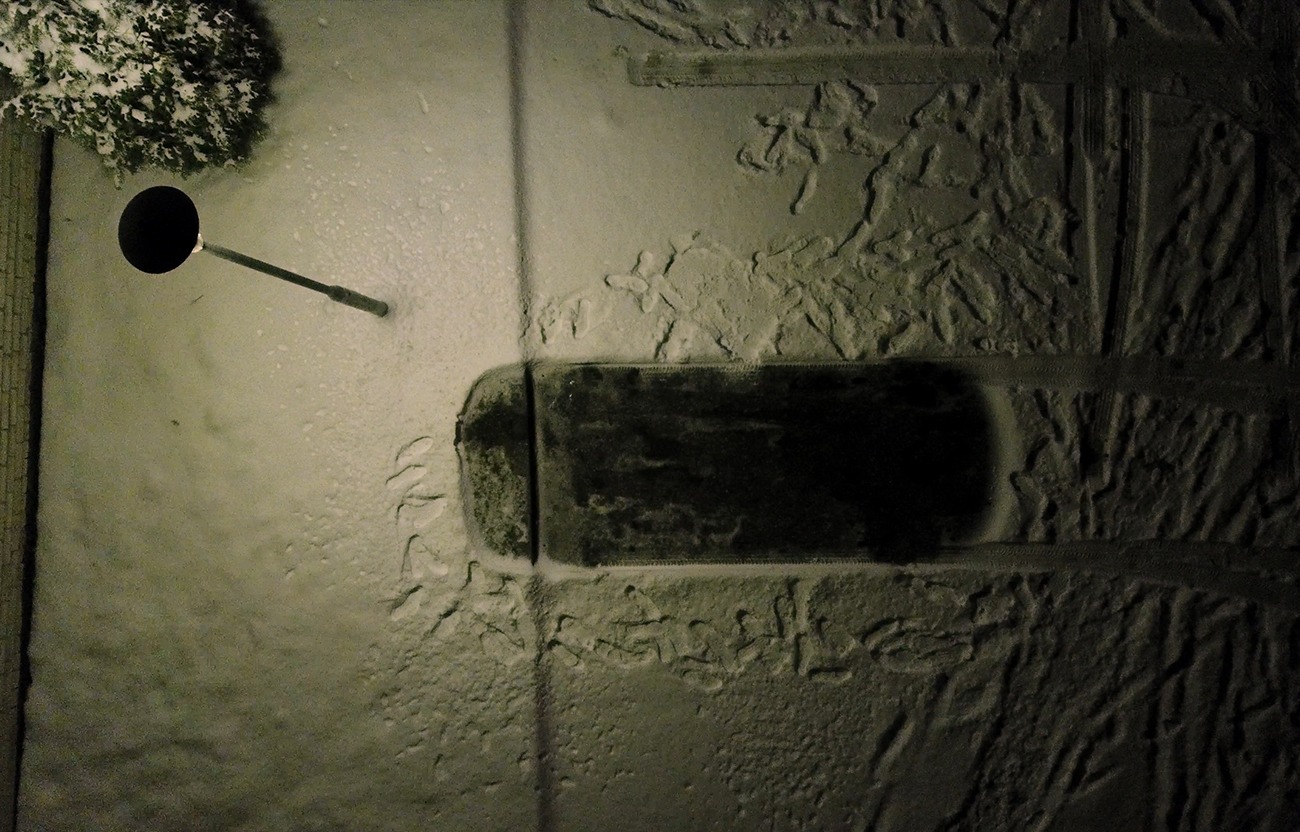
Paulius Šliaupa. As if Night Were Dreaming of Day
10 January – 24 February
Gallery Meno Niša invites you to the exhibition As if Night Were Dreaming of Day by the award-winning Lithuanian artist Paulius Šliaupa, currently based in Gent, Belgium. The exhibition takes place in the gallery and in the Vilnius City Hall, it examines the changing relationship of man with nature. In Vilnius City Hall, the artist’s video works and paintings created during his studies and residencies in Belgium will be shown. In the Meno Niša gallery, paintings, laser engravings of landscape models, and objects based on natural structures will be exhibited. Insects printed in 3D, glowing at night, hang between the works and bring another interpretation of the modern relationship with nature. “The paintings in the exhibition reveal natural structures from different perspectives. While I was growing them layer after layer, I was looking at the ground, sand, moss, a frozen road, frozen snow, winter or summer skies, distant fields and photographs of my village. The subjects are abstract and almost unrecognisable in themselves, immersing you in an atmospheric exploration,”- decsribes hs works Paulius Šliaupa.
Jonas Mekas Visual Arts Center

The Beast a.k.a. Quartets
Until 29 February
In the creative realm of Jonas Mekas, word and image are inseparable. This exhibition unveils how significant topics for Mekas unfold in space through the mediums of video films and texts. In one hall, a previously unseen masterpiece by Jonas Mekas, titled “The Beast,” is displayed, revealing the complexity and multilayered nature of his artistic thinking. In another hall, the walls are covered with “The Very Beginning of the Beginning” – Mekas’ manuscript featuring notes, corrections, and translations.
“The Beast” by Jonas Mekas is a spatial moving image sculpture composed of diverse visuals recorded in personal and cultural memory. A cube structure, formed by 16 monitors, displays four important quartets for Jonas Mekas – significant events in art and life.
